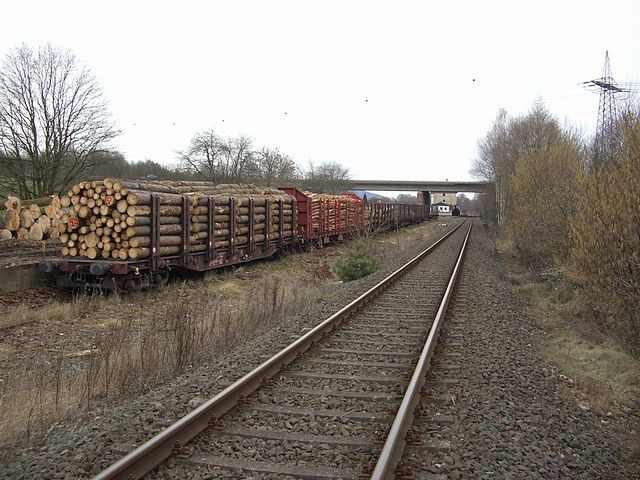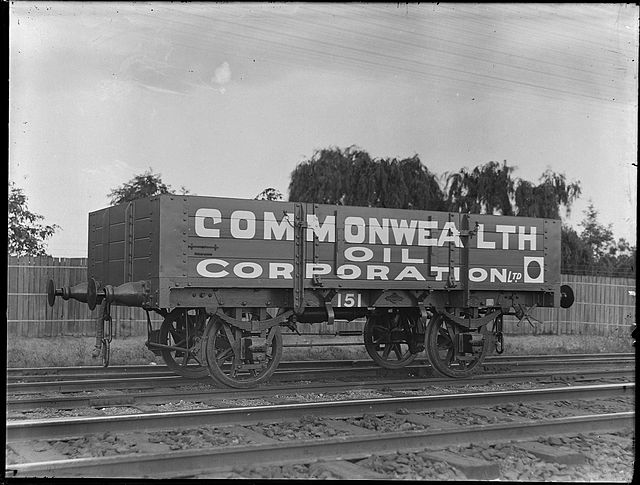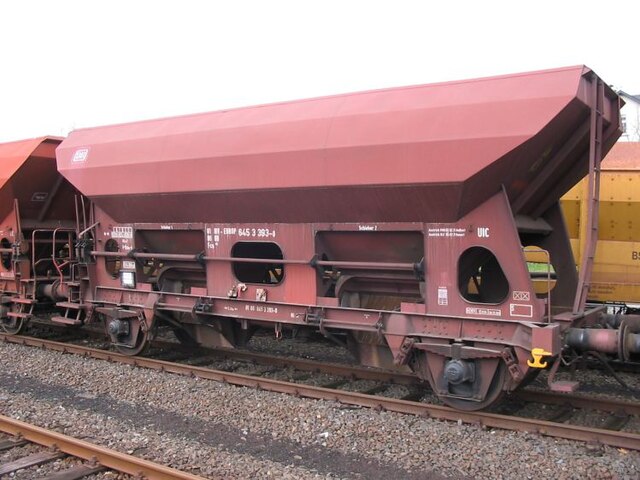Flat wagons, as classified by the International Union of Railways (UIC), are railway goods wagons that have a flat, usually full-length, deck and little or no superstructure. By contrast, open wagons have high side and end walls and covered goods wagons have a fixed roof and sides. Flat wagons are often designed for the transportation of goods that are not weather-sensitive. Some flat wagons are able to be covered completely by tarpaulins or hoods and are therefore suitable for the transport of weather-sensitive goods. Unlike a "goods wagon with opening roof", the loading area of a flat is entirely open and accessible once the cover is removed.
Flat wagons for carrying timber: the Class Snps719 (front) and the Class Roos-t642 (behind)
Flat wagons of Class Ks with standard dimensions and swivelling stanchions, loaded with Swiss containers
Double-decker car transporter of Class Laaeks
Double-decker flat wagons for car transportation owned by ARS
Goods wagons or freight wagons, also known as goods carriages, goods trucks, freight carriages or freight trucks, are unpowered railway vehicles that are used for the transportation of cargo. A variety of wagon types are in use to handle different types of goods, but all goods wagons in a regional network typically have standardized couplers and other fittings, such as hoses for air brakes, allowing different wagon types to be assembled into trains. For tracking and identification purposes, goods wagons are generally assigned a unique identifier, typically a UIC wagon number, or in North America, a company reporting mark plus a company specific serial number.
Hbillns wagon with sliding sides in ITL’s green livery
Commonwealth Oil Corporation goods wagon in Australia
Range of goods wagons at Kornwestheim marshalling yard
The side-discharging Class Fcs092 became the UIC standard for the transportation of coarse-grained goods








